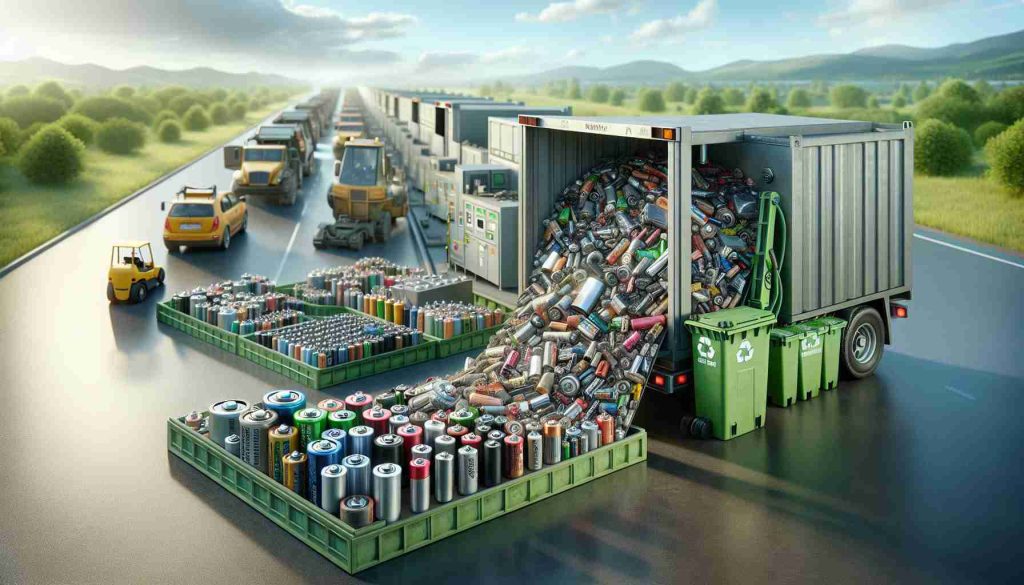
Summary: The increasing reliance on batteries has raised environmental concerns, leading to a call for better recycling and technology. The article spotlights the urgency of developing sustainable battery disposal methods, coupled with innovations in battery technology to meet the dual goals of environmental stewardship and market growth.
In the realm of environmental protection and sustainable development, a hot topic has emerged: the imperative of advancing battery recycling methods and embracing new technologies. As the backbone of a myriad of electronic devices and the burgeoning electric vehicle sector, batteries present both an opportunity for growth and a pressing ecological challenge.
With an overwhelming 180,000 tons of batteries becoming hazardous waste yearly in the U.S., environmental advocates are sounding the alarm. These figures comprise a significant 20% of all hazardous materials in landfills, highlighting the dire need for transformative recycling strategies.
The pivot toward electric vehicles has particularly spotlighted lithium batteries, sparking an industry-wide race to innovate. Enhancement of this sector involves both amplifying end-of-life battery handling and pioneering in the realm of battery chemistry, such as solid-state technology designed for longevity and minimal environmental impact.
However, challenges remain, including the complexity of battery structures and the economic aspects of recycling. To overcome these hurdles, industry leaders are investigating processes like direct recycling, aiming to reclaim precious materials more efficiently and eco-friendly.
To maintain a clear view of the evolving landscape, resources such as the Environmental Protection Agency (EPA) and the International Energy Agency (IEA) offer invaluable insights. These agencies provide not just analysis but guidance crucial for anyone passionate about shaping the future of sustainable battery usage.
Conclusion: With a mounting sense of urgency and possibility, it’s clear that the battery industry must integrate sustainability into its lifecycle. This involves investment in recycling tech and a commitment to developing new battery forms. Through education, innovation, and the support of regulatory frameworks, a viable, eco-conscious approach to our growing battery dependency can take shape, propelling the industry towards a greener, more sustainable trajectory.
Overview of the Battery Industry and Market Forecasts
The battery industry is undergoing a significant transformation, primarily driven by the rise of electric vehicles (EVs) and the increasing demand for portable electronics and energy storage solutions. The global battery market is expected to grow substantially in the coming years. According to market research, the lithium-ion battery market alone is projected to experience significant growth, with estimations of reaching a market size worth billions of dollars by the end of the decade.
The penetration of renewable energy into the global energy mix is further contributing to the demand for batteries as efficient storage systems are necessary to address the intermittent nature of solar and wind power. With countries setting ambitious targets for reducing carbon emissions, the role of batteries in this new energy landscape is becoming increasingly important.
Issues and Challenges in the Battery Industry
Despite the promising market growth, the battery industry faces several challenges. One of the main concerns is the environmental impact of battery production and disposal. The mining of raw materials, such as cobalt, nickel, and lithium, often leads to ecological degradation and poses ethical issues regarding the working conditions in the mining sites. Furthermore, the disposal of spent batteries in landfills leads to toxic heavy metals leaching into the soil and groundwater, causing widespread environmental problems.
Another critical challenge is the development of efficient recycling processes. Current recycling methods are often costly and recover only a fraction of the valuable materials within batteries. Achieving higher recycling rates is crucial for reducing the demand for virgin materials, decreasing environmental impact, and ensuring a sustainable supply chain for battery manufacturers.
Innovations and Sustainable Development in Battery Technology
In response to these challenges, there is an increasing focus on innovations that enhance battery sustainability. Advancements in battery design, such as solid-state technology, promise greater energy density, safety, and lifespan compared to traditional liquid-electrolyte batteries. Companies are also exploring the use of alternative, more abundant materials to reduce reliance on scarce metals.
Direct recycling—a method where components of the lithium-ion batteries are recovered without breaking down the chemical structure—holds potential for improving the efficiency and reducing the environmental footprint of battery recycling. Additionally, new business models, such as battery-as-a-service (BaaS), are being explored to encourage battery reuse and extend product life cycles.
Government agencies and international organizations play a vital role in this transition towards sustainability. For instance, the Environmental Protection Agency (EPA) and the International Energy Agency (IEA) conduct research, offer policy guidance, and set regulatory frameworks that encourage companies to adopt more sustainable practices.
Conclusion
The battery industry is at a crossroads, with significant opportunities in market growth and technology development on one hand and considerable environmental and ethical challenges on the other. To navigate this complex landscape, stakeholders across the industry must work collaboratively to integrate sustainability into every stage of the battery lifecycle. Through continued investment in research and development, public education, and supportive regulatory environments, the industry can achieve its potential for eco-friendly growth and innovation.

Iwona Majkowska is a prominent figure in the tech industry, renowned for her expertise in new technologies, artificial intelligence, and solid-state batteries. Her work, often at the forefront of innovation, provides critical insights into the development and application of cutting-edge AI solutions and the evolution of energy storage technologies. Majkowska’s contributions are pivotal in shaping the future of sustainable energy and intelligent systems, making her a respected voice in both academic and industrial circles. Her articles and research papers are a valuable resource for professionals and enthusiasts alike, seeking to understand the impact and potential of these transformative technologies.


